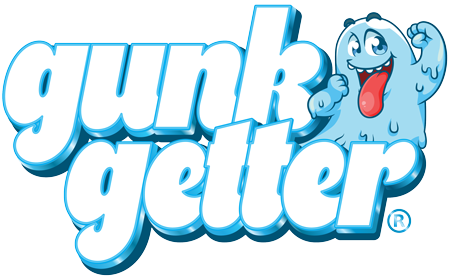Frequently Asked Questions
1. What are the benefits of involving kids in cleaning?
2. What tools should I include in a kid-friendly cleaning kit?
3. How can I make cleaning more fun for kids?
4. What is a good way to establish a cleaning schedule?
5. How can I motivate my kids to participate in cleaning?
Creating a kid-friendly cleaning routine can make household chores not only manageable but also enjoyable for your little ones. Involving children in cleaning helps teach responsibility, instill good habits, and can even strengthen family bonds. Below, we’ll explore effective strategies and activities that can facilitate a fun and engaging cleaning routine suitable for kids of all ages!
Understanding the Benefits of a Kid-Friendly Cleaning Routine
Before diving into the details of establishing a cleaning routine, it's essential to understand why this practice is beneficial. Here are some key advantages:
- Teaches Responsibility: Kids learn early about the importance of contributing to the household.
- Encourages Teamwork: Cleaning together can enhance family relationships and teach collaborative skills.
- Builds Confidence: Completing chores gives kids a sense of achievement and boosts their confidence.
- Promotes Organizational Skills: Learning how to organize cleaning tasks can help children manage time effectively.
Getting Started: Preparing Your Home Cleaning Kit
If you want to make cleaning fun for your kids, having the right tools is crucial. A Home Cleaning Kit should be safe and suitable for children. Here are some tips for putting together the perfect kit:
Choose Kid-Friendly Cleaning Tools
Select cleaning tools that are lightweight and easy to use. Consider fun and colorful items that will catch your child’s eye, such as:
- Small hand brooms and dustpans
- Buckets with cartoon designs
- Non-toxic cleaning solutions safe for kids
- Reusable microfiber cloths in bright colors
Discuss Safety Rules
Safety should always come first. Sit down with your children and discuss important safety rules when it comes to cleaning. These guidelines will include:
- Using cleaning tools properly
- Not mixing cleaning supplies
- Wearing gloves if necessary
- Staying away from certain areas, such as near sharp objects
Involving Kids in the Cleaning Process
Now that you have your Home Cleaning Kit, let’s talk about how to easily involve your kids in the cleaning process. Here are some strategies:
Assign Age-Appropriate Tasks
Children should be assigned tasks that are appropriate for their age. Here are some tips:
- Infants and Toddlers: Simple tasks like picking up toys or putting clothes in a basket.
- Preschoolers: Wiping surfaces with damp cloths, sorting laundry, or dusting lower shelves.
- School-Aged Kids: Vacuuming, cleaning their own rooms, or helping with meal clean-up.
- Teens: More complex tasks such as cleaning bathrooms or organizing shared spaces.
Make It a Game
Children love games, so why not turn cleaning into a fun activity? Here are a few ideas:
- Time Challenges: Set a timer for specific cleaning tasks, and challenge kids to beat the clock!
- Scavenger Hunt: Make a list of items that need to be put away, and when they find and return them, they earn points.
- Clean-Up Playlist: Create a cleaning playlist and dance while you tidy up. Make cleaning a lively activity!
Creating a Cleaning Schedule
To make cleaning feel less overwhelming, establish a cleaning schedule. This schedule can be daily, weekly, or even monthly, depending on your family's needs and preferences. Here’s how to create one:
Monthly Family Meeting
Hold a family meeting to discuss cleaning schedules and responsibilities. Make it fun! Here are steps to create an engaging schedule:
- Write down all cleaning tasks that need to be done.
- Assign tasks to each family member according to age and availability.
- Use a colorful calendar to visualize the schedule.
- Consider rotating tasks to keep things fresh and avoid boredom.
Incorporate Flexibility
While it’s essential to have a routine, make sure you allow for flexibility. If one day is too busy for cleaning, it’s okay to shift things around. Emphasizing adaptability can teach kids that life is sometimes unpredictable, and planning can help mitigate that.
Incentivizing the Cleaning Routine
Motivation is key when encouraging children to participate in chores. Here are some ways to keep your kids engaged:
Establish a Chore Chart
Visual reminders can be powerful. Create a chore chart that includes tasks and corresponding rewards. Here’s how it can work:
- Assign points for each completed task.
- After accumulating a certain number of points, kids can earn rewards such as a fun outing or extra screen time.
- Make the chart colorful and engaging to inspire excitement.
Introduce Family Cleaning Days
Dedicate a weekend day for family cleaning activities. Cleaning can be transformed into a bonding experience. Here are some ideas:
- Work together to tackle larger areas of the house.
- Incentivize with treats or meals afterward to create a reward system.
- Wrap up with a family movie or game night—this reinforces positive experiences associated with cleaning.
Making Cleaning Fun and Educational
Cleaning provides a great opportunity for children to learn valuable life skills while having fun. Consider how you can integrate learning into the cleaning process:
Teach About Nature and Sustainability
When cleaning, use the opportunity to educate kids about sustainability. Discuss how using eco-friendly products with your Home Cleaning Kit can protect the environment. Here are some tips:
- Introduce them to recycling and composting.
- Discuss how cleaning reduces allergens and keeps the home healthy.
- Involve them in choosing sustainable cleaning practices for family engagements.
Encourage Problem-Solving Skills
Encourage kids to think critically about cleaning processes. Pose questions like:
- "What cleaning method do you think will work best for removing this stain?"
- "How would you organize this space to make it more functional?"
These discussions encourage them to view cleaning as a problem-solving exercise rather than just a chore.
Creating a Lasting Cleaning Culture
The goal isn’t just to create a kid-friendly cleaning routine; it’s to instill a culture of cleanliness and appreciation for home care. Here’s how to set the tone:
Be a Role Model
Be the example you wish to see. If your children see you engaged and positive during cleaning, they’re likely to adopt a similar attitude. Here are some insights:
- Talk positively about cleaning tasks; be enthusiastic!
- Share how cleaning helps make spaces enjoyable and welcoming.
- Engage in family discussions about cleanliness and its benefits.
Celebrate Progress
Recognizing efforts and improvements is a fantastic way to reinforce positive behavior. Consider:
- Taking before-and-after photos of completed spaces to showcase the transformation.
- Holding mini-celebrations after thorough cleaning days.
- Encouraging kids to reflect on their progress and how they’ve contributed to family well-being.
Crafting a Sparkling Future Together
Creating a kid-friendly cleaning routine isn’t just about teaching children how to clean—it’s about fostering important life skills, building family unity, and cultivating a respect for caring for one’s environment. With the right tools, approaches, and practices, you can create a playful yet effective cleaning schedule that excites and engages your children. The next time cleaning day rolls around, instead of resistance, you'll see eagerness and teamwork! By implementing these strategies, you’ll be well on your way to building a clean, organized, and enjoyable home for your family, ultimately paving the way toward a sparkling future together.
Explore the world of another Shopify or Wix store owner. Visit their captivating online store. Keep in mind that this is a promotional link, and we are not responsible for the content of the linked store.


Share:
The Essential Guide to Air Quality and Cleaning Regularly
Your Ultimate Pet Owners’ Guide to a Clean Home